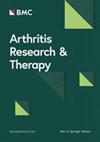Clinical features and survival analysis of 40 cases of anti-MDA5 antibody-positive dermatomyositis complicated with interstitial lung disease
IF 4.9
2区 医学
Q1 Medicine
引用次数: 0
Abstract
Several studies have shown that patients with anti-MDA5 antibody-positive dermatomyositis (anti-MDA5 antibody + DM) have an increased risk of developing rapid progression of interstitial lung disease (RPILD), which is associated with poor prognosis and high mortality. However, diagnosis and treatment are often delayed due to atypical early clinical features and heterogeneity. Therefore, clinical features should be identified to establish a prognosis model for early identification and intervention, thereby improving the clinical prognosis of patients. The study aimed to investigate the clinical features, risk factors, treatment strategy, and construct a survival prognosis model for anti-MDA5 antibody + DM patients with ILD. A total of 40 anti-MDA5 antibody + DM-ILD patients admitted to the Department of Pulmonary and Critical Care Medicine and the Department of Rheumatology and Immunology in the Second Affiliated Hospital of Xi 'an Jiaotong University from September 2018 to May 2022 were retrospectively analyzed. Prognostic factors correlated with overall survival (OS) during hospitalization were identified by multivariate Cox regression analysis, and a nomogram was established. The nomogram was internally validated using C-index and time-dependent (at 1-, 2-, and 3- months) calibration curves with 1000 iterations of bootstrap resampling. Moreover, the optimal truncation values for continuous variables and Kaplan–Meier (K-M) curves were determined, which were used to analyze the difference in survival between groups. Finally, time-dependent decision curve analysis (DCA) was employed to validate the clinical value of the nomogram. Significant differences were found between the survival group and the non-survival group in terms of age, oxygenation index, extent of lung lesions, diffuse alveolar damage (DAD) and nonspecific interstitial pneumonia (NSIP), and LDH, GLU, CEA, ferritin, CRP levels in serum (P < 0.05). Multivariate regression analysis revealed that increased NSIP in high-resolution computed tomography (HRCT) and ALT,LDH,CEA,CRP were risk factors for poor prognosis (P < 0.05). A nomogram diagram was constructed according to the final multiple Cox model to predict the 1-, 2-, and 3-month OS. According to ALT, AST, LDH, CEA, and CRP cutoff values, the KM algorithm was used to estimate the survival curve (P < 0.05). DCA curves were drawn for the model-dependent variables included treatment style, NSIP, ALT, AST, LDH, CEA, and CRP. This indicated that the nomogram yielded a higher net benefit compared to other single prognostic factors, and the cutoff value grouping model showed better practical application value. Combined treatment with glucocorticoids and immunosuppressants was a protective factor for long-term survival. Survival analysis indicated that patients with anti-MDA5 + DM-ILD could benefit from combined treatment for longer survival. Anti-MDA5 antibody + DM is prone to interstitial lung disease, poor prognosis, and high mortality. Risk prediction model could help us paying attention to these features which may allow the early identification of high-risk patients and promote timely diagnosis and treatment.求助全文
约1分钟内获得全文
求助全文
来源期刊

Arthritis Research & Therapy
RHEUMATOLOGY-
CiteScore
8.60
自引率
2.00%
发文量
261
审稿时长
14 weeks
期刊介绍:
Established in 1999, Arthritis Research and Therapy is an international, open access, peer-reviewed journal, publishing original articles in the area of musculoskeletal research and therapy as well as, reviews, commentaries and reports. A major focus of the journal is on the immunologic processes leading to inflammation, damage and repair as they relate to autoimmune rheumatic and musculoskeletal conditions, and which inform the translation of this knowledge into advances in clinical care. Original basic, translational and clinical research is considered for publication along with results of early and late phase therapeutic trials, especially as they pertain to the underpinning science that informs clinical observations in interventional studies.
 求助内容:
求助内容: 应助结果提醒方式:
应助结果提醒方式:


